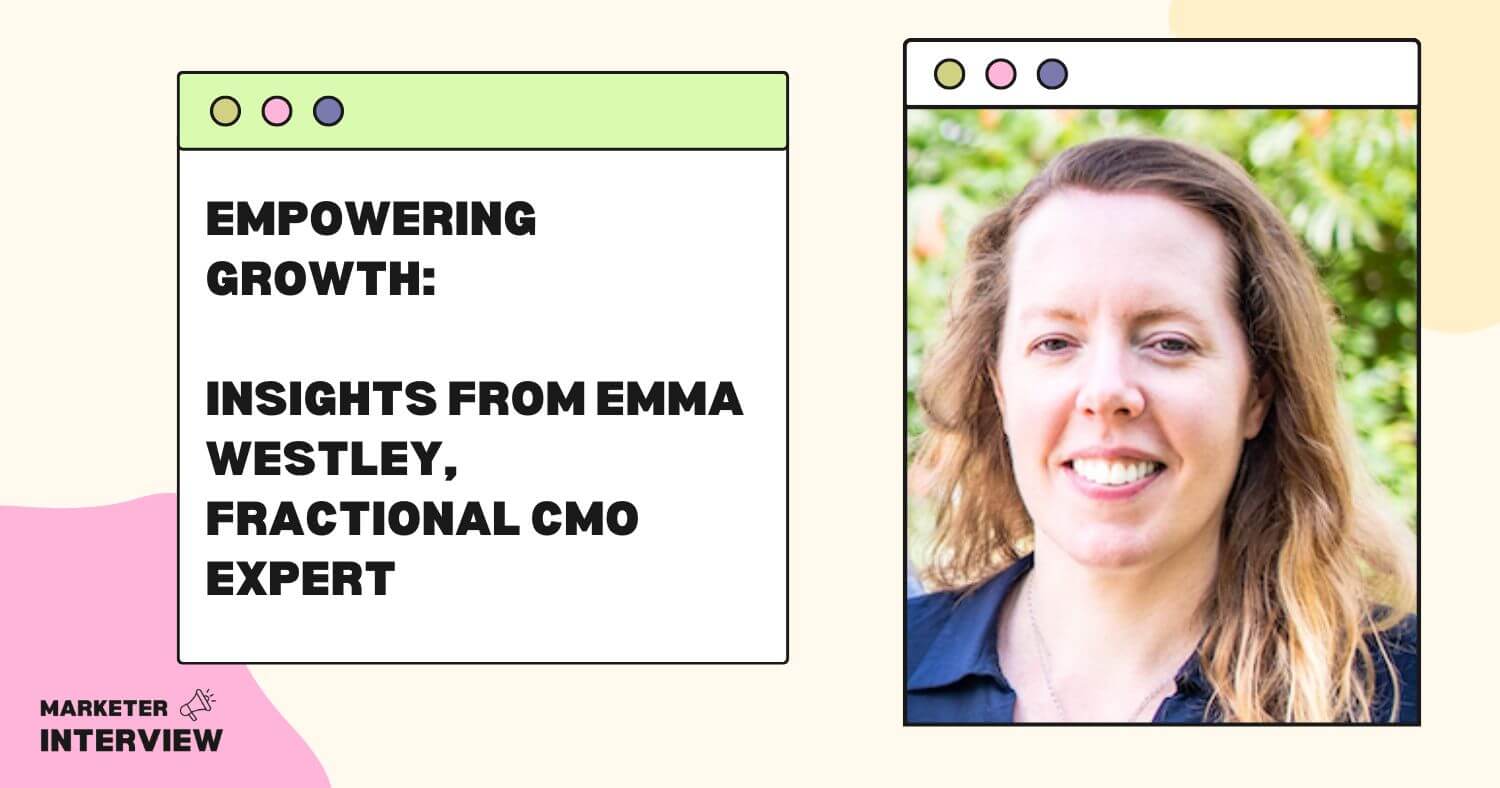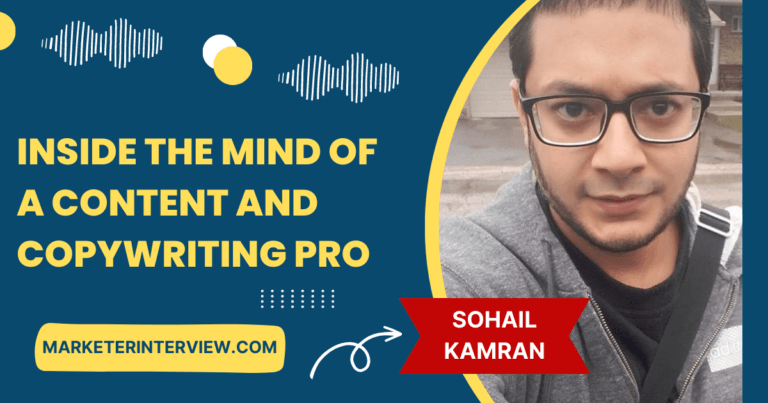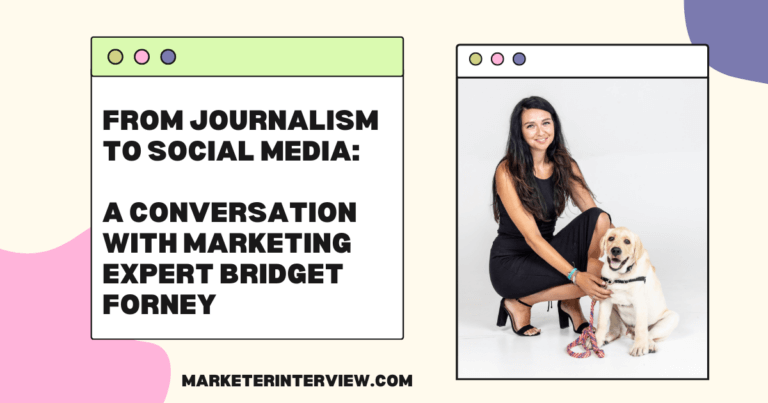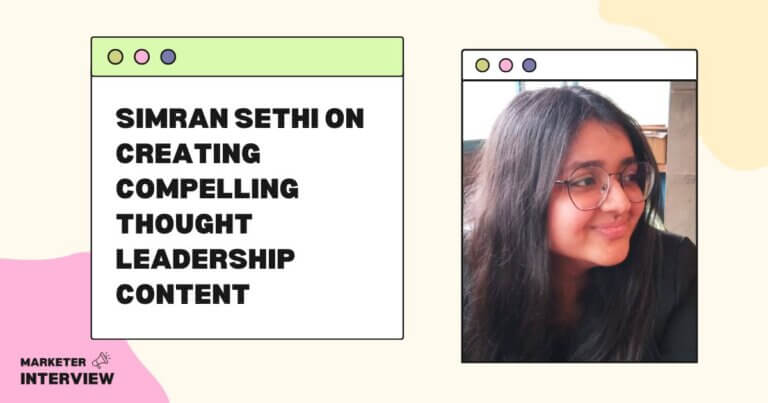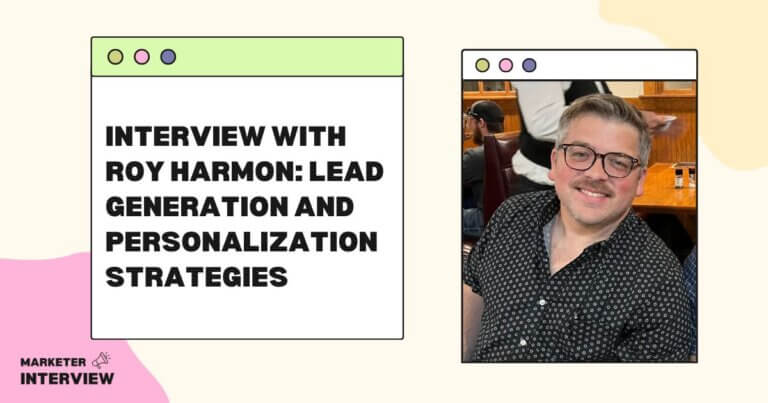Empowering Growth: Insights from Emma Westley, Fractional CMO Expert
Welcome to Marketer Interview, the go-to blog for insights and inspiration from the marketing world.
In today’s interview, we enjoyed speaking with Emma Westley, a Fractional CMO and Content Strategy Consultant with extensive experience working with global B2B startups and small businesses.
Emma has helped over 30 startups and small businesses translate their goals into achievable and scalable marketing and content strategies, enabling them to scale and grow.
With over 20 years of industry expertise and a portfolio of impressive projects, Emma is a valuable resource for anyone looking to understand the “Fractional” CMO trend and B2B content strategy.

Contents
- 1 Can you tell us how you first got into marketing and what sparked your passion for it?
- 2 Could you highlight a particular project or experience that was especially rewarding or challenging?
- 3 The concept of a ‘Fractional’ CMO is gaining traction in the industry. Can you explain what it entails and why it has become a popular choice for startups and small businesses?
- 4 What are some common marketing challenges when working with startups and small businesses, and how do you help companies overcome them?
- 5 B2B GTM strategy plays a crucial role in the success of any business. What key elements do you consider when developing a GTM strategy for your clients?
- 6 What approach do you take when helping companies define their positioning and value in a crowded marketplace?
- 7 Could you share some best practices or tips for creating compelling messaging that resonates with the target audience?
- 8 What strategies have you found most effective in driving engagement and generating high-quality leads for B2B companies?
- 9 What methodologies or tools do you use to ensure successful client campaign outcomes?
- 10 As a marketing mentor, what guidance do you provide to entrepreneurs and marketing professionals navigating the challenges of building their brands?
Can you tell us how you first got into marketing and what sparked your passion for it?
Sure. I actually trained as a linguist and translator, but my first job as a Project Manager for a translation company wasn’t suited to my personality.
So I went to night school to retrain in marketing, and there I found a blend of strategy and execution, planning and creative, and the whole area of customer psychology.
This combination of different elements was where my passion lay and why I decided to pursue a career in marketing.
Could you highlight a particular project or experience that was especially rewarding or challenging?
There have been a few!
For my most rewarding project, that would be a service-based company in the US that I’ve been working with now for about a year and a half.
The CEO is highly passionate about what he’s building as a business, but he’s also very compassionate and practical in how he’s doing that. That ethos comes across in the brand and marketing, as it’s all about building great employee and customer relationships.
It’s really paid off too, as the business has grown from $5M annual revenue to over $20M.
The concept of a ‘Fractional’ CMO is gaining traction in the industry. Can you explain what it entails and why it has become a popular choice for startups and small businesses?
So this term is still relatively new – especially in Europe and Asia.
I explain in more detail here what a Fractional CMO does. In a nutshell, it’s where an experienced marketing executive is typically hired part-time to provide high-quality marketing advice, strategy oversight, and often mentorship to a company and team.
Crucially, a Fractional CMO isn’t an employee, so the company doesn’t have to cover the usual overheads of a full-time employee (FTE).
This is why startups and small businesses are taking advantage of this trend because it’s much more cost-effective than hiring an FTE they probably don’t need.
Equally, they’re getting the right level of senior leadership that they need on the marketing side to guide their strategy and ensure they’re doing the right things at the right time and to the right target audience.
What are some common marketing challenges when working with startups and small businesses, and how do you help companies overcome them?
The most common challenges are:
- Knowing where to start and how just to get going with their marketing, or
- They are trying to do too much because they’ve been told they need to do SEO, social media, events, and so on!
Where I help companies is with FOCUS.
First, focus on the right target audience and ensure the company’s positioning matches that.
Then, ensure the messaging and marketing collateral align with the positioning.
Finally, focus on the right sort of tactics and activities to be doing to hit the overarching sales and business goals.
I’m different from many other CMOs in that my approach doesn’t take months. It’s fairly fast and still hits on the critical areas of customer research, testing, etc.
Equally, it’s balanced across both the strategy and execution. It’s not all theoretical waffle, and I get my hands dirty with getting things done!
B2B GTM strategy plays a crucial role in the success of any business. What key elements do you consider when developing a GTM strategy for your clients?
So there are two main components to any GTM strategy:
- The sales channel: Is this direct to the customer or indirect via partners or managed service providers. Establishing this is essential as it can significantly impact your growth numbers and where you need to focus with your marketing activities.
- The route to your customer: Are your customers the end customer or a partner? How will you reach them? What tactics are you going to use?
What approach do you take when helping companies define their positioning and value in a crowded marketplace?
Over many years of working with big brands such as HP and Accenture and smaller startups and SMEs, I’ve developed an excellent methodology that helps a founding team determine its positioning and value proposition.
Again, it’s a relatively rapid process, and it’s structured according to 3 key elements:
- How is the product or service going to change your customer’s life?
- What benefits and outcomes is it going to achieve for the customer?
- What proof points and evidence are there to back up these claims?
There’s a lot more to it regarding customer research and competitor differentiation. Still, it effectively boils down to the 3 things above and then pulling these together into that succinct ‘“elevator pitch.”
I also find it essential to speak directly with founders, sales teams, and customers, as this is where you’ll pick up the golden nuggets and even specific words and phrases that can drive the core value proposition.
Speaking the customers’ language is critical!
I’ve taken an L&D company through this recently, and the customer feedback helped highlight where the company needed to position itself. Some of that feedback even drove the main messaging we used to revamp the website and collateral. One of the key phrases is now even a trending hashtag on LinkedIn!
Absolutely! So as I mentioned above, the first thing is speaking the customers’ language and using words and phrases that they use too.
Second, avoid jargon and try as much as possible to use everyday language. In B2B,
this can be tricky because you often deal with many technical products and services. Putting the work in to make complex concepts more understandable is critical.
What strategies have you found most effective in driving engagement and generating high-quality leads for B2B companies?
First is being clear on who your target audience is and what pain points or problems you’re addressing. This follows through into your lead generation regarding who you will target and how you will reach them.
Then, it’s crafting the content according to that customer’s language, as I mentioned before. Speak to them as they would speak, as a human rather than a corporate robot!
Finally, don’t overlook the creatives because excellent designs will attract attention!
As long as you’ve got the right message aimed at the right audience, those 3 things together will bring the leads in!
What methodologies or tools do you use to ensure successful client campaign outcomes?
With any campaign, you need to be clear on the goals you’re trying to achieve and the metrics you’re looking to measure against those goals.
When you have those set upfront, then it’s crucial to keep checking in on them – not just in terms of how you’re tracking but also to assess everything you do against them.
I’d say be ruthless: If an idea doesn’t contribute to the overall goal somehow, then don’t do it.
Also, as part of that upfront goal setting, plan out everything involved in a campaign too. Often, people underestimate (or even forget about!) the planning and prep needed before you can launch. But if you do that initial planning and prep, then the running of the campaign itself becomes a lot smoother.
In terms of tools, there are so many great ones out there now. I often use LucidChart to map out a campaign architecture (including some prep work). Then a project management tool like Asana or Trello to ensure deadlines are being hit and all the tasks are being accounted for.
For a startup or small biz, you don’t need lots and lots of tools – one or two will suffice.
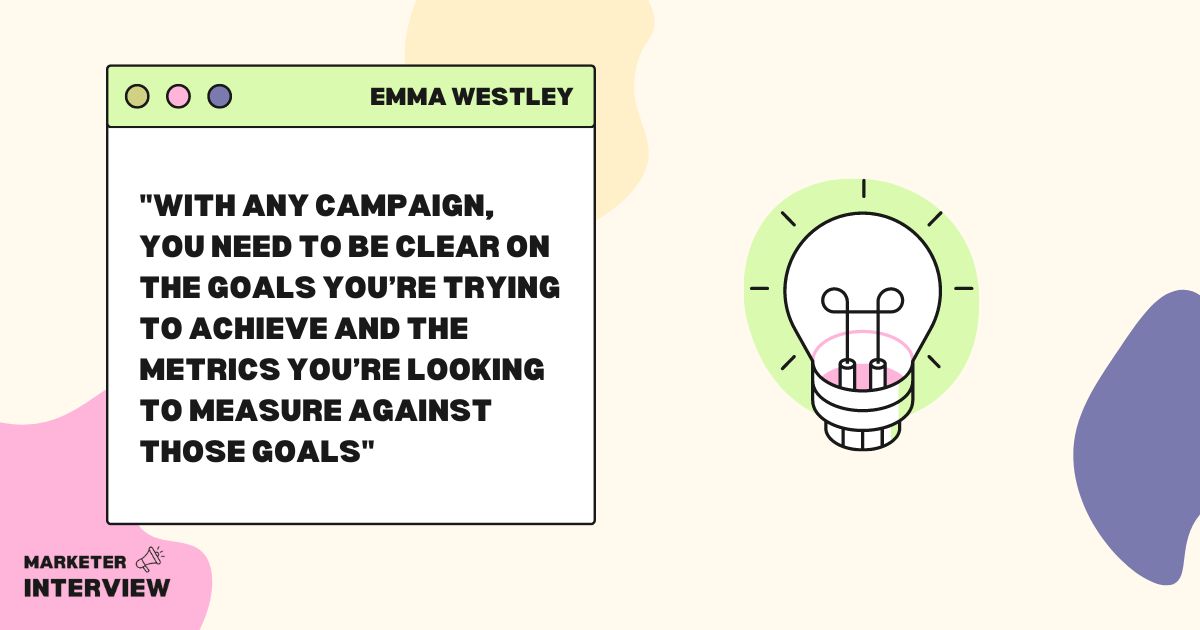
I touched earlier upon the whole “FOCUS” point, and I’d say that is pivotal to my mentoring too – although I’d couple it with “CLARITY” too.
By that, I mean that I help entrepreneurs and marketing team members get clear on what they’re trying to achieve and how to achieve that. I also like to keep it simple: 2 or 3 clear goals are usually enough to work towards. Any more, and it’s overwhelming, and nothing gets achieved!
If you’ve got those clear goals in your head the whole time, it becomes a lot easier to measure everything against them and stay focused on what’s important. Especially in marketing, getting distracted by the latest shiny AI tool or Martech platform is too easy.
Startups and small businesses often don’t need these distractions. They need to focus on critical things and have the drive, determination, and patience to make them work.
